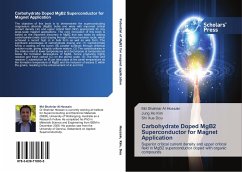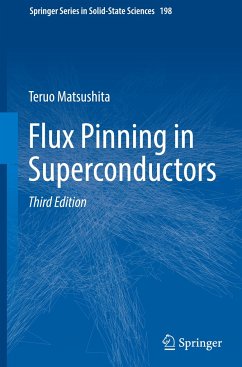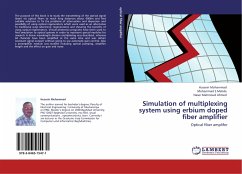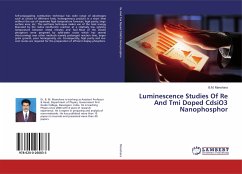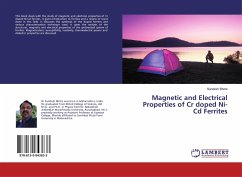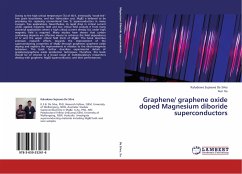
Graphene/ graphene oxide doped Magnesium diboride superconductors
Versandkostenfrei!
Versandfertig in 6-10 Tagen
39,99 €
inkl. MwSt.

PAYBACK Punkte
20 °P sammeln!
Owing to the high critical temperature (Tc) of 40 K, intrinsically "weak-link" free grain boundaries, and low fabrication cost, MgB2 is believed to be promising for replacing conventional low Tc superconductors in many cryogen- free applications. Nevertheless, its rapid drop in critical current under applied magnetic field and low critical field exclude it from many industrial applications where a high critical current density (Jc) under high magnetic field is required. Many studies have shown that carbon containing dopants are effective means to enhance the field dependence of Jc and the uppe...
Owing to the high critical temperature (Tc) of 40 K, intrinsically "weak-link" free grain boundaries, and low fabrication cost, MgB2 is believed to be promising for replacing conventional low Tc superconductors in many cryogen- free applications. Nevertheless, its rapid drop in critical current under applied magnetic field and low critical field exclude it from many industrial applications where a high critical current density (Jc) under high magnetic field is required. Many studies have shown that carbon containing dopants are effective means to enhance the field dependence of Jc and the upper critical field (Hc2) of MgB2. This book describes extensive research efforts towards the improvement of the superconducting properties of MgB2 through graphene/ graphene oxide doping and explains the improvements in relation to the electromagnetic behaviour. This book further describes experimental details of graphene/graphene oxide production techniques. Therefore, this book should be of interest to a broad range of multidisciplinary researchers dealing with graphene, MgB2 superconductor, and their performances.



